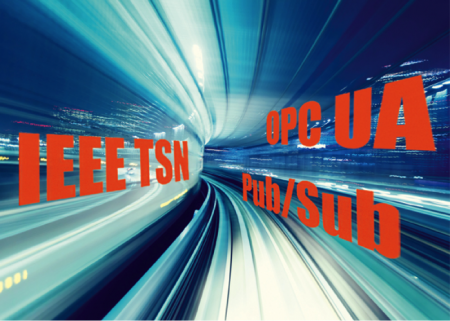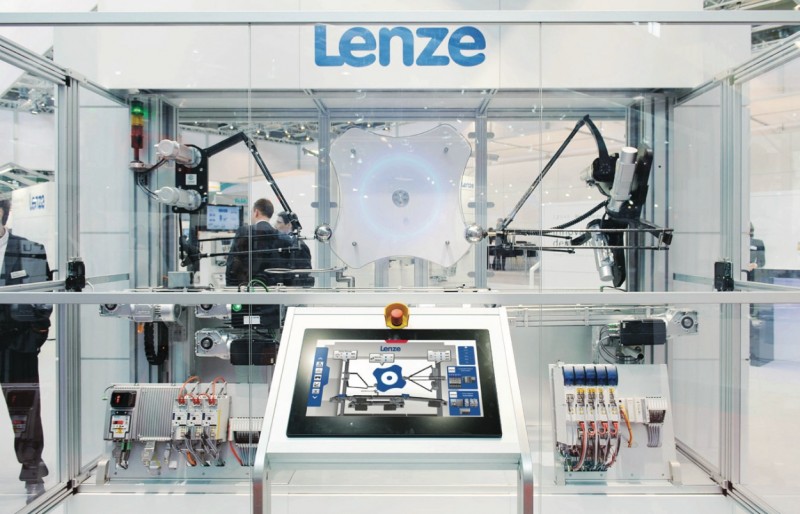Geared up for the Future
Lenze Benefits From Toolkit for Fast Development of OPC UA Functionality
In the past, Lenze used to rely on the OPC Classic standard to enable access to device data for external applications. However, as this standard no longer covers advanced requirements, the company opted for the development of an OPC UA Server. This was achieved using an OPC Development Toolkit from Softing Industrial Automation.
Lenze is one of the global specialists for drive and automation solutions in mechanical engineering. Under the motto “Motion Centric Automation”, Lenze concentrates more than 65 years of experience in motion control, supporting their customers during all phases of the development process, from the first brainwave to the final operation of the machine. A comprehensive portfolio of masterminded drive solutions, complete automation systems, engineering tools, modular software, and one-stop services forms the basis, making the implementation, production, and application of technical equipment as easy as possible for the customer. This is greatly aided by the use of open standards and interfaces.
Migrating From OPC Classic to OPC UA
In line with the basic Lenze principle, users access the Lenze device parameters using third-party software. For this purpose, a standardized, secure, and future-oriented interface is used which is not bound to particular fieldbuses and platforms. In the past, this was the job of the Lenze drive server operating on the basis of the OPC Classic standard. This server, which uses Microsoft’s COM technology, encapsulates the communication protocols used and provides the device parameters to other automation applications such as visualization systems. However, the COM technology is aging and its maintenance is a tedious task. In addition, this standard no longer covers modern requirements, such as the implementation of security features.
In their quest for a future-proof solution approach that replaces OPC Classic, Lenze investigated the OPC UA (Unified Architecture) standard. Besides the supported functionality, the evaluation focused on performance aspects, as it was important that especially the time-critical requirements could be covered. But also the comprehensive security concept, the Internet-based communication, the potential use on embedded platforms, and the fact that the Industrie 4.0 requirements are covered spoke in favor of the OPC UA standard. After careful consideration, Lenze opted for the development of an OPC UA Server.
Read the full Case Study here…
Deterministic OPC UA with Publisher/Subscriber and TSN Ethernet
Softing’s new white paper discusses OPC UA Publisher / Subscriber Communication for the Industrial Internet of Things and outlines details on the proof-of-concept implementation of an OPC UA Publisher / Subscriber stack.
 The OPC UA Publisher/Subscriber communication model is ideal for the requirements of Industry 4.0/IIOT and is currently in the process of specification at the OPC Foundation. Softing is the first to have implemented an OPC UA publisher / subscriber proof-of-concept model. Softing’s model application uses a standard Ethernet network for deterministic data exchange with the IEEE Time-Sensitive Networking (TSN) standard. In detail, the OPC UA Publisher/Subscriber application demonstrates a guarantee of service for controller-to-controller communication and the deterministic communication via an existing TSN-Ethernet infrastructure. At the same time control processes, streaming and data traffic run over one standard TSN-enabled Ethernet network without affecting real-time data delivery or wasting bandwidth. Requirements of Industrie 4.0/IIOT are better covered in this way.
The OPC UA Publisher/Subscriber communication model is ideal for the requirements of Industry 4.0/IIOT and is currently in the process of specification at the OPC Foundation. Softing is the first to have implemented an OPC UA publisher / subscriber proof-of-concept model. Softing’s model application uses a standard Ethernet network for deterministic data exchange with the IEEE Time-Sensitive Networking (TSN) standard. In detail, the OPC UA Publisher/Subscriber application demonstrates a guarantee of service for controller-to-controller communication and the deterministic communication via an existing TSN-Ethernet infrastructure. At the same time control processes, streaming and data traffic run over one standard TSN-enabled Ethernet network without affecting real-time data delivery or wasting bandwidth. Requirements of Industrie 4.0/IIOT are better covered in this way.
Softing’s white paper provides an overview of the prototype implementation of the OPC UA Publisher/Subscriber stack and shows the detailed results of the timing measurements that were performed based on this demonstrator. A free download is available on Softing’s website.
